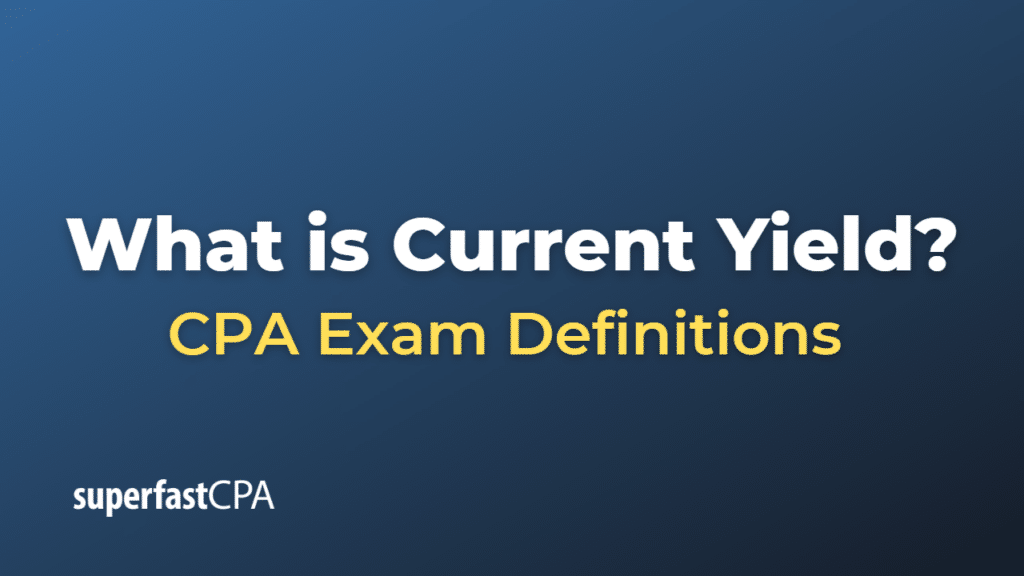Current Yield
Current yield is a financial metric that shows how much annual income is earned from an investment, relative to its current market price. It’s most commonly used with bonds and other fixed-income investments, but it can also be used with dividend-paying stocks.
The formula to calculate the current yield is:
\(\text{Current Yield} = \frac{\text{Annual Income}}{\text{Current Market Price}} \)
For a bond, the “annual income” is the annual interest payment (or coupon payment), and the “current market price” is the bond’s current market price. If the bond’s market price is different from its face value (or par value), the current yield will be different from the bond’s stated interest rate (or coupon rate).
For a stock, the “annual income” is the annual dividend payment, and the “current market price” is the stock’s current market price.
Current yield provides a snapshot of the income return of an investment, but it doesn’t take into account any capital gains or losses that might be realized if the investment is sold before its maturity. In addition, for bonds, it doesn’t take into account the reinvestment of interest payments, which can have a significant impact on the investment’s total return, especially over long periods. Therefore, while current yield can provide useful information, it should be used in conjunction with other financial metrics and considerations for a comprehensive investment analysis.
Example of Current Yield
Let’s consider a bond as an example:
Suppose you own a bond with a face value of $1,000 that pays an annual coupon (interest) of $50. The bond’s coupon rate is thus 5% ($50 / $1,000). However, due to changes in market interest rates, the bond’s current market price has risen to $1,100.
To calculate the current yield, you would divide the annual income (the coupon payment) by the current market price:
\(\text{Current Yield} = \frac{\text{Annual Income}}{\text{Current Market Price}} \)
\(\text{Current Yield} = \frac{\$50}{\$1,100} = \text{0.04545 (or 4.545% when expressed as a percentage)} \)
So, even though the bond’s coupon rate is 5%, its current yield is only 4.545% because the bond’s price has increased. This is because you’re earning the same $50 in annual interest, but you’re now effectively paying $1,100 for that income rather than the original $1,000.
This example illustrates how the current yield can change with the market price of the bond, and how it can provide a more accurate picture of the income return of the bond given its current market price. However, it also shows that the current yield doesn’t take into account any capital gain or loss that would be realized if the bond were sold before its maturity.













